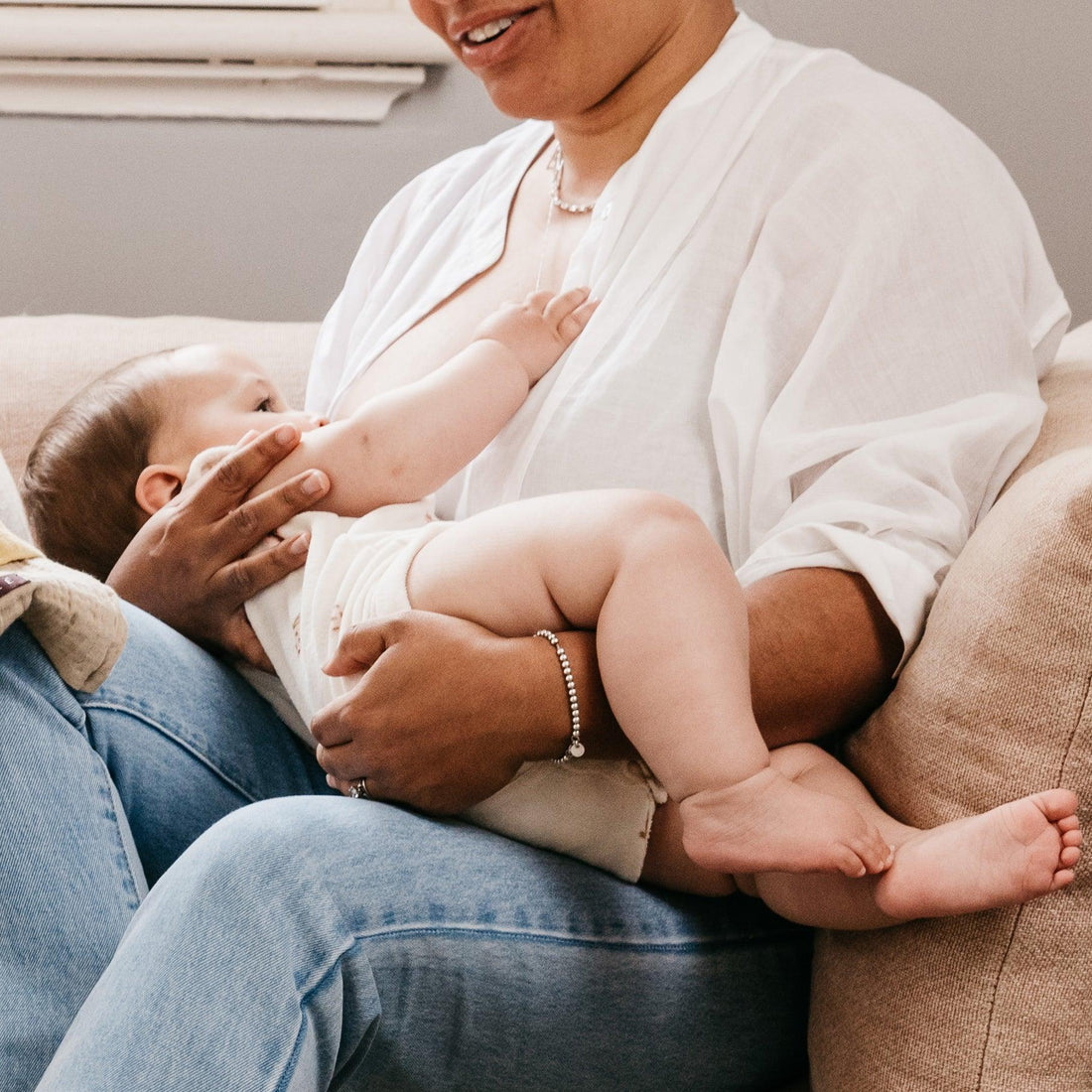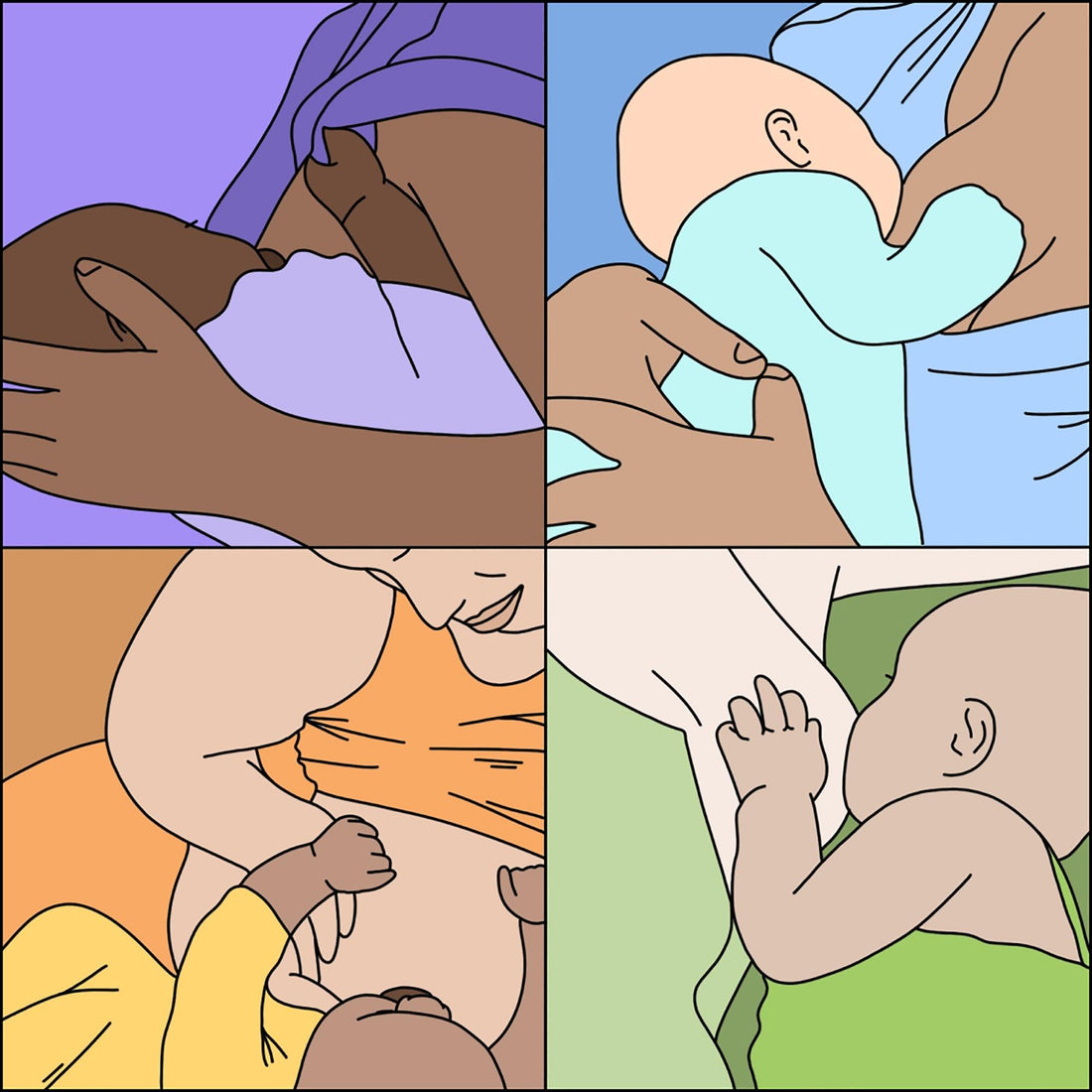Here’s what to know about finishing breastfeeding.
Every breastfed baby is eventually weaned, which is why it seems strange that it is less talked about than other aspects of breastfeeding like the latch, supply and preventing a blocked duct. “Breastfeeding is a relationship, it has to work for both baby and mum. Every relationship is different, which makes weaning so personal,” says Jade Cottee, mum of three and marketer, who recently shared some of her experience of weaning her second son Knox with her Instagram community. “It happens at a different stage for every parent for various reasons, so there’s not really a common time to talk about it as a milestone. It’s a shame, because mothers need to be supported emotionally and nutritionally at this time — just like when they’re freshly postpartum. The hormonal shifts are not often discussed and can be quite a shock if you’re not expecting it!” It’s true, weaning can happen after a few weeks or a few years, and therefore the approach varies greatly, so “how to do I wean them?” doesn’t have a simple answer, but that doesn’t mean it shouldn’t be discussed. With that in mind, from preparing for another biological shift to weaning in practice, here’s what to know about finishing breastfeeding.
When does it end?
If things go to plan, breastfeeding ends when you and your baby are ready. There are some guidelines from the World Health Organization: exclusive breastfeeding (i.e. no other fluids or solids) for six months and then continued breastfeeding combined with solid foods for “2 years or as long as mother and baby desire”. Sometimes the baby will choose this time, by no longer accepting breastmilk, and this can be distressing for a mum if it is early in your breastfeeding journey. Sometimes breast refusal is temporary though, so when this happens, particularly if they are less than twelve months, it’s a good idea to seek help from a midwife or lactation consultant. Otherwise breastfeeding should end when you’re ready. This can be for whatever reason too, maybe you’re ready to have your body back to yourself, or are looking to get pregnant again and breastfeeding is affecting your ovulation. Weaning is about lessening as well as finishing, so you may just want to reduce the frequency. “I love breastfeeding, but the frequency of feeds with Knox was becoming a problem for me,” says Jade. I was feeling touched out and wanted my independence back. I love the saying “it’s only a problem if it’s a problem for you” — applies to so many parenting things! So I guess my goal now is to get him down to one feed a day and then hopefully he drops that last one naturally. I thought I’d be ready to fully wean by 2, but I’m in no rush.” If you are not ready to wean, but have other pressures which make you think you should: from going back to work, to milk quality, to sickness, know that there are usually ways around it. The Australian Breastfeeding Association is a very helpful resource on navigating different breastfeeding obstacles.
Slowly does it
When you are ready, the key is to go slow. Drop feeds gradually (over days or even better, weeks) so that your supply has a chance to decrease and reduce the chance of blocked ducts or mastitis occurring. This also gives time for your baby to adjust. Offer meals before breast milk and try not to fully empty your breast.
Baby, meet bottle
If your baby is under 12-months, their breast feeds will need to be swapped to formula feeds from a bottle. If your baby hasn’t taken a bottle before, or hasn’t taken it well, there are some tools that can help. Firstly, you can start wearing a nipple shield like the Haakaa Round Nipple Shield which is designed to help with the transition. Investing in bottles that mimic breast and nipple shape can also help the transition. Comotomo bottles keep bottle-feeding as close to breastfeeding as possible, while https:Elhee Biberone is shaped like a breast, the first physical object introduced in the baby-parent relationship.
Toddler weaning: a negotiation
Weaning toddlers or older children when you are ready but they are reluctant is a bit more mind work. If you’re in this stage, you’ll likely relate to this scenario: you’re over feeding so much, so you can feel a bit irritated when you’re doing it, kid senses this, so starts requesting feeds more, taking matters into their own hands (and just grabbing you), which makes you more irritated and them more insistent. They don’t understand perspective yet, so you’ll have to do it, and it does help to remember that feeding is a comfort and place of closeness for kids. A safe space they would understandably be reluctant to give up. Allow time, drop feeds slowly, and talk to your child about how breastfeeding is going to end soon, but there will always be lots of cuddles. “The best advice I’ve been given when it comes to parenting is ‘follow the child’,” says Jade, “Everything is easier when you work with your kid, not against them. Weaning Spencer (my first) was an easy process because he was ready and he eventually chose to stop feeding. I think part of this was because I had capacity to fill Spencer’s cup in other ways, we weren’t so reliant on breastfeeding. Whereas weaning Knox is taking far longer than I expected. I’ve followed a similar plan to what I did with Spencer but Knox is a completely different kid. It’s possible he has been hanging on to his feeds as that’s really the only time it’s just me and him, one-on-one. Annnd now that I’ve said that out loud I know I have to give him more of my attention!”
Practical measures
Once your head is in the right space, there are some practical and physical measures you can take. “I’ve resorted to wearing Band-Aids on my nipples when I don’t want to feed,” says Jade, which is one of the top methods! ABA also recommends a range of methods which are essentially distraction: wearing clothes that are difficult for children to access your boobs, avoid letting them see you changing or in the shower (as seeing your boobs reminds them of feeding), cut feeds shorter with a new activity, “let’s stop now and go build a tower,” and by changing up their routine ie. if you normally have a morning feed when they wake, be up early, dressed and with their breakfast waiting for them so they are occupied.
Lots of comfort
As feeding is a time of comfort, it’s important to fill that void with lots of physical closeness: cuddles, sitting on your lap, kisses and hand holds. This is beneficial for you too as weaning is emotional for you as well as your little one. You should also consider your child’s need to suck, even older kids might emotionally benefit from drinking from a bottle for a while to help them transition.
Looking after you
“When I night weaned Spencer, I wasn’t expecting the hormonal dump. I was on an emotional rollercoaster. I wish I’d known to give myself some space and grace (and my husband a heads up),” says Jade. Weaning can feel similar to PMS or “baby blues”. You can feel stressed, emotional and possibly guilty, and you’re losing that extra production of oxytocin (the happy, relaxed drug that comes with breastfeeding). Mood swings, exhaustion, skin breakouts, anxiety, irritability and feeling very teary are all common, so it’s important to support yourself nutritionally as well as emotionally. Minimising sugar and caffeine is helpful during this time as they can affect your endocrine system, but it’s most important you put in the things you need. “This time I’ve had blood tests to determine any nutritional deficiencies and am supplementing accordingly to hopefully make the process as smooth as possible,” says Jade. “It’s a ride! I was told to treat it like the first six weeks postpartum. Support yourself and prepare for hormonal shifts.”
If you need support with your weaning, or any breastfeeding issue, the National Breastfeeding Helpline is available 24/7 on 1800 686 268.



















